Pectin is a fascinating and often overlooked component in fruits that plays a crucial role in our cooking creations. This blog outlines the diverse range of pectin concentrations in fruits of different types and the significance of understanding this variation.
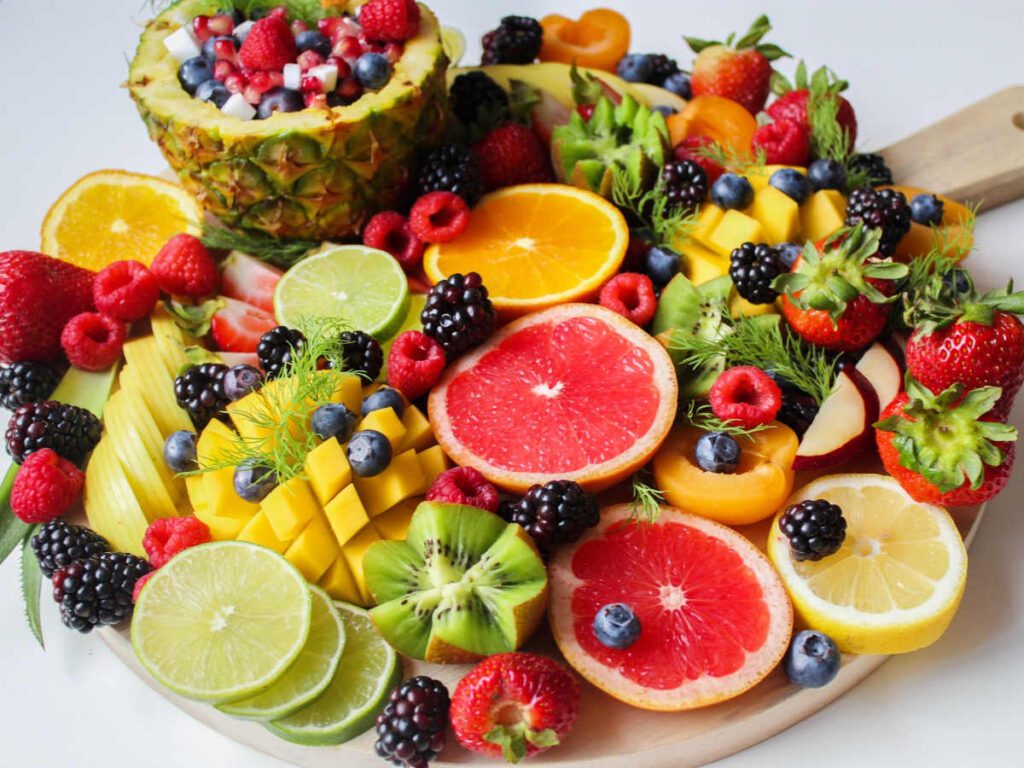
What is Pectin?
It is a naturally occurring soluble fibre that is found in the cell walls of plants. It is classified as a polysaccharide and is most commonly extracted from citrus fruits (and sometimes apples) to make commercial pectin products.
In nature, it is used by plants as structural support building blocks. It is also used commercially in food preservation and manufacturing.
While pectin is found in most fruits, the amount varies depending on the type of fruit. This is what gives the fruit its firm texture, and it is also responsible for the gel-like consistency of jams and jellies.
What is the role of Pectin in making Preserves?

When making preserves, pectin plays a role in helping the jam or jelly to achieve the desired texture. Too much or too little of it has a significant impact on the outcome of the preserve.
For this reason, it is important to follow a recipe closely when using this ingredient or when using specific types of fruits.
This substance is responsible for the jelly-like texture of the fruit. When used in preserving, it interacts with sugar and acid to achieve the desired texture or set.
The amount of pectin in fruit will determine how much time is needed to cook the preserve. More of it means a shorter cooking time, while less will require a longer cooking time. The type of acid, and amount, used will also affect the amount needed for gelling to occur.
Why Does the Amount of Pectin in Fruit Matter?
The amount of pectin in fruit can vary depending on the type of fruit and the ripeness of the fruit. For example, green apples generally have more than ripe apples.
If there is not enough, the preserves will be runny. If there is too much, the preserves will be too thick.
It is responsible for the gelation or setting of a jam or jelly. Gelation is the process of forming a jelly-like substance from a solution.
Factors that influence the pectin content in various fruits:
Stage of Ripeness
It is most abundant in fruits when they are just about to ripen.
As the fruit matures and ripens, it begins to break down, reducing its overall quantity.
Therefore, slightly under-ripe fruits are often a better source of pectin.
Type of Fruit
Different varieties of fruit have varying levels of pectin.
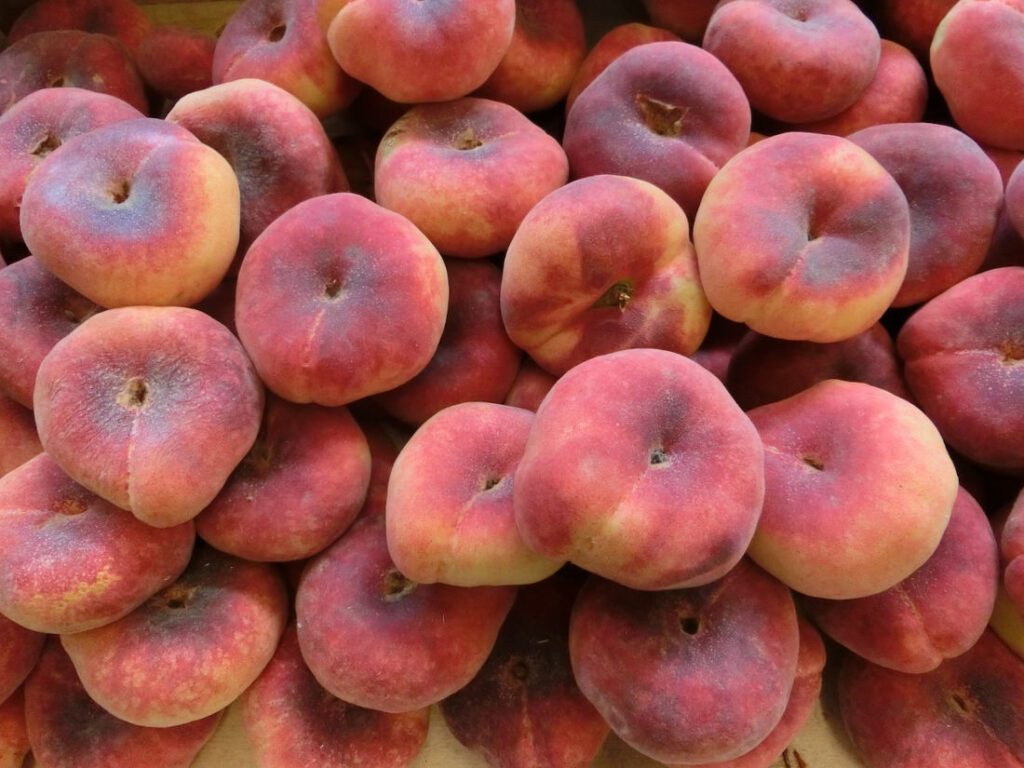
Apples and citrus fruits, for instance, are known to have high concentrations, while other fruits like peaches and raspberries are on the lower end of the scale.
Climatic Conditions:
The environment where the fruit is grown can affect its pectin content. Fruits grown in cooler climates or higher altitudes tend to have a higher levels than those grown in warmer, low-altitude regions.
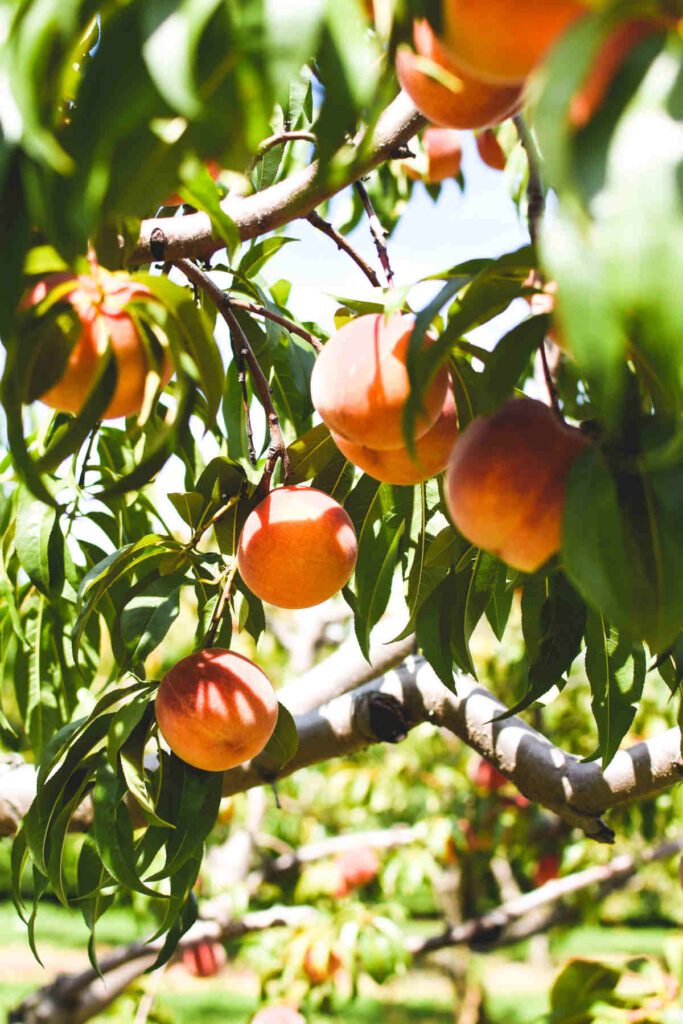
Processing Method
The method of processing fruit can influence the amount of pectin it retains and how the molecules interact to form a gel. For example, overcooking can lead to a loosening of molecule bonds and the mixture becomes thinner again. While adding acidic substances (like lemon juice) can encourage release of more pectin and and encourage the bonding to support the gelling effect.
Age of the Fruit:
The age of the fruit at the time of harvest can impact its pectin content. Younger fruits generally contain more than older ones.
Storage Conditions
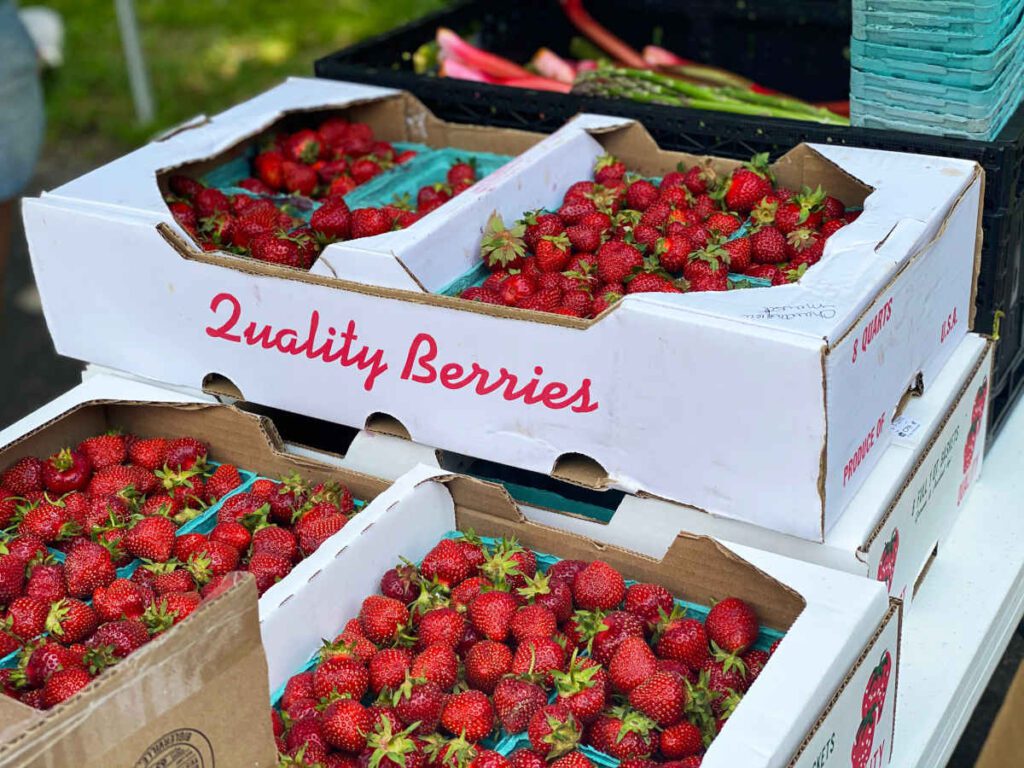
How the fruit is stored post-harvest can also affect the concentration in the fruit.
Prolonged transport/storage or storage under inappropriate conditions can result in a decrease in the concentration.
Understanding these factors can help you optimize your use of fruits to get the best result.
Fruit Pectin Range
Low-Pectin Fruits
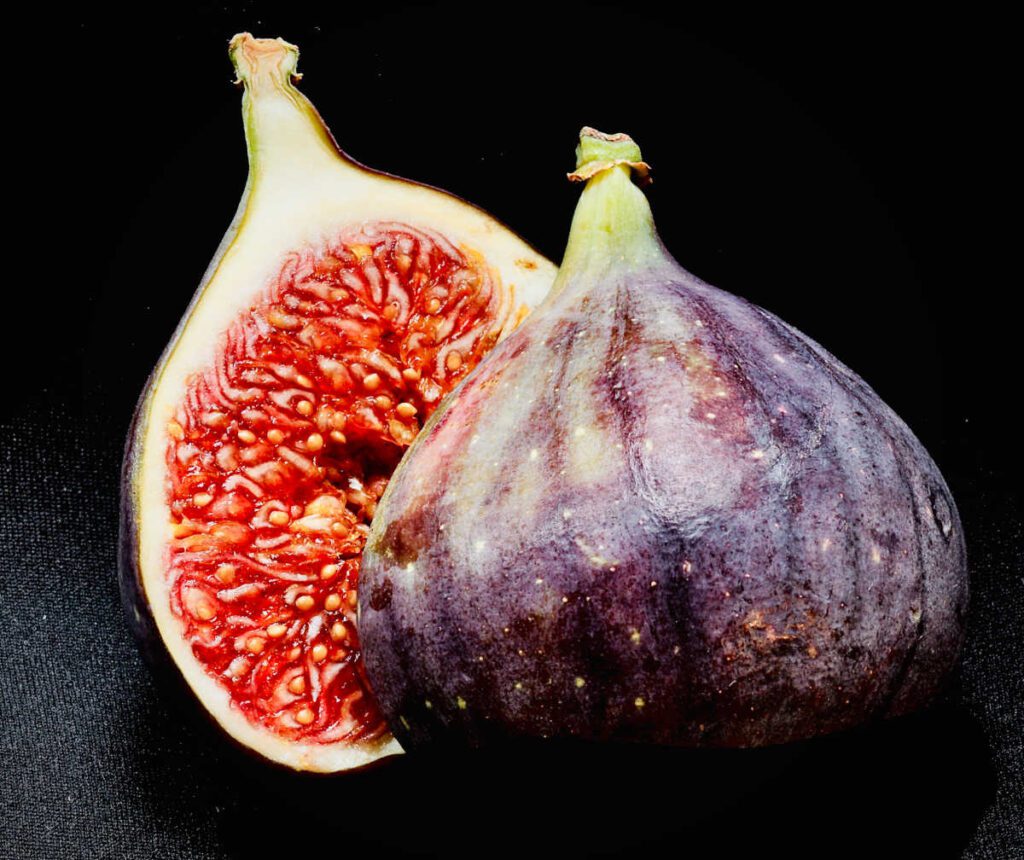
These include blackberries, figs, grapes, kiwis, mangoes, papayas, strawberries, and watermelons.
Except for grapes, most of these are tropical or subtropical.
Based solely on this low concentration, if used on their own, these fruits are not considered ideal for canning or preserving.
But don’t worry, there are still plenty of ways to enjoy them and compensate for this characteristic! Read on to learn more about this.
Moderate-Pectin Fruits
Apples, apricots, blueberries, cherries, guavas, nectarines, peaches, pears, plums, quinces, and raspberries are in this category.

Most of these fruits are native to Europe and Asia except cherries which originated in North America.
These fruits are good for canning and preserving some without the addition of other high-pectin fruits or commercial pectin products, and others needing only a small amount of this support to realise a set.
Occasionally they may need to be cooked for longer to realise a truly satisfactory set. But this is worth it when you do not have to add anything extra.
High-Pectin Fruits
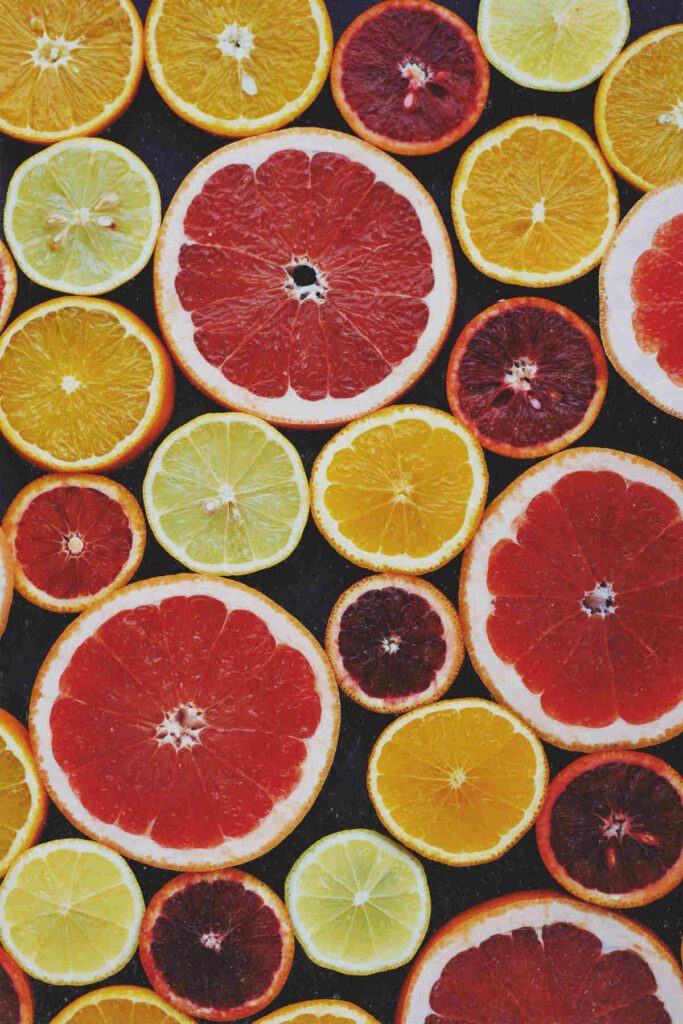
All citrus fruits (oranges, lemons, limes, grapefruits) contain high levels of natural pectin as well as gooseberries, cranberries and currants.
These fruits require no added pectin ingredients when canning or preserving because they will gel effectively on their own.
How to Compensate for Natural Fruit Pectin Levels
Pectin is a natural substance found in fruits that helps to give them structure and firmness. When making preserves, it can be a helpful factor as it helps to thicken and set the mixture.
To achieve your desired outcome when making preserves, you may have to take steps to adjust and compensate for either high or low natural levels in the fruits you use to make your chosen preserve.
TIPS for cooking high-pectin fruits
Fruits with high pectin levels may not need much encouragement to thicken a preserve mixture. It can therefore become likely that you will need to accommodate this natural characteristic and take steps to ensure that your preserve does not get too thick/firm.
1. Pair it with a low-pectin fruit
Use less of the high pectin fruit or replace part of the total fruit weight with another fruit that has a lower concentration.
2. Adjust amounts of certain key ingredients
Raising or lowering certain aspects can make big differences.
For example:
- too little liquid will cause too rapid thickening. So add enough water – but then not too much as you will end up having to cook the mixture for longer. So small amounts at a time, with stirring, and actively managing the heat.
- reduce the amount of lemon juice (or other acid components). High levels of these will encourage the release of more pectin and therefore thickening, so your foot off the pedal here.
- reduce the amount of sugar
- replace part of or all of the sugar with another sweetener e.g. honey. (softer set, and you will have to store this in the refrigerator).
- reduce the amount of commercial pectin used
- Change the proportional volume of low and high-pectin fruits used in the recipe.
All or any of these can significantly affect the consistency of the final product.
3. Dilute with water
Add more water to dilute a high concentration, quickly thickening the mixture to encourage the ingredients to soften enough and blend.
You do not want it to thicken too fast as the preserve could become too thick.
If it is too thick it is more likely to stick to the bottom of the pan and burn; it is likely to also be more of a challenge to spread.
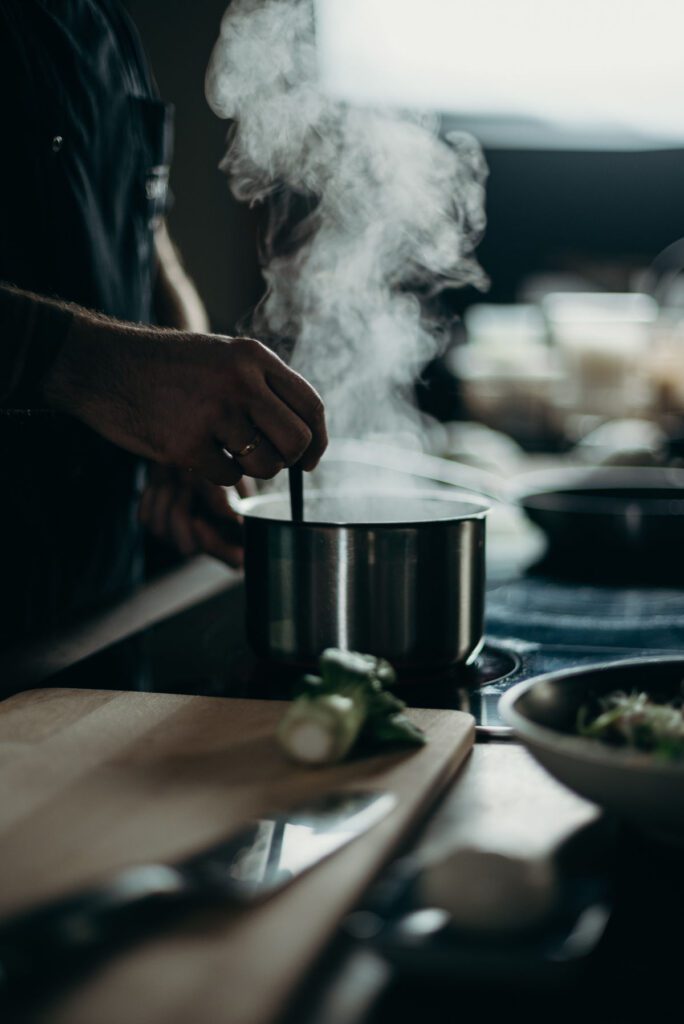
4. Avoid overcooking the preserve.
You must check the set of the preserve regularly while it is cooking so that you can stop the cooking as soon as it reaches the set point.
By following these tips, you can make sure that your preserves turn out just the way you want them to.
TIPS for cooking low-pectin fruits
Fruits with low pectin levels often need some additional support to help the mixture to thicken and set. The aim of taking such steps is also directed at preventing the preserves from becoming too runny.
1. Pair with a complementary high-pectin fruit.
Consider adding a proportional amount of fruits that are high in pectin. These include apples, quinces, and citrus fruits.
For example, gooseberries have a natural high concentration, so using them in a recipe that calls for low-pectin fruits such as strawberries can help to naturally thicken the preserve. This can also add additional interesting flavours to the final jam or jelly.
2. Cook for a longer time
Cooking the fruit longer can also help to break down and release more of the pectin from the fruits and potentially create a thicker consistency.
3. Increase the amount of sugar

Adding more sugar to the preserve can also help to thicken it by increasing the syrup component.
4. Increase the amount of acid
Adding more acid in the form of lemon juice or vinegar can encourage the release of and bind more pectin.
5. Add more fruit
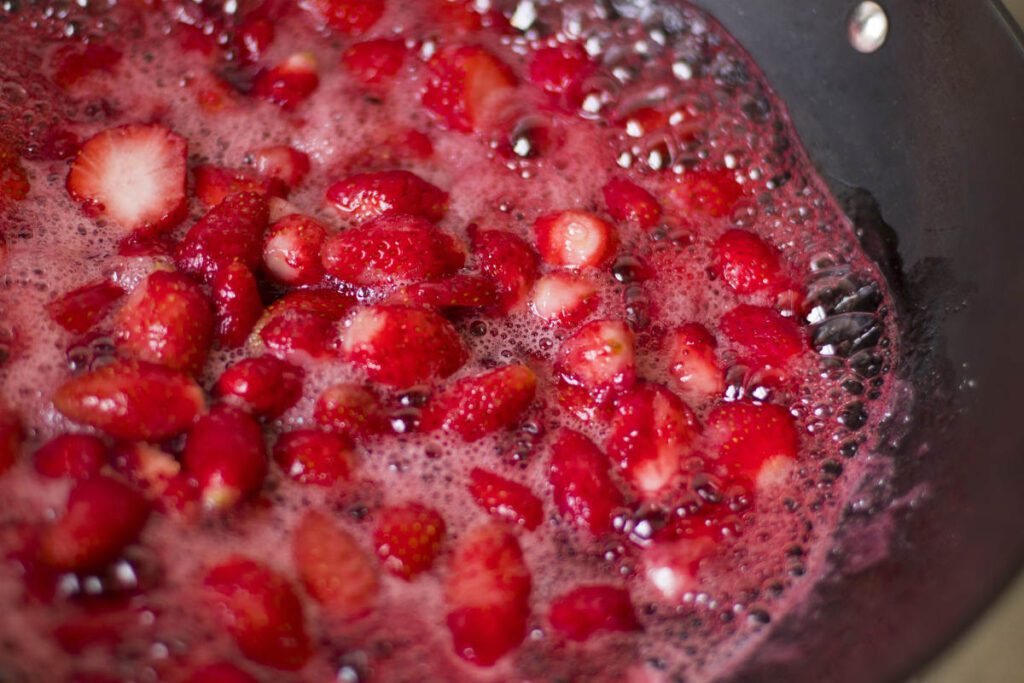
Increase the overall amount of fruit in the recipe. This will help to increase the total concentration and therefore impact.
6. Use commercial or homemade pectin
You can also add commercial or homemade pectin to the recipe.
This will help to thicken the preserve and give it a more desired consistency.
By taking these steps, you can ensure that your preserves have the desired consistency, even if they are made with low-pectin fruits.
So, the degree to which fruit contains high or low natural pectin can predict aspects of its performance and needs for canning and preserving. Taking into your consideration the difference between low-, moderate-, and high-pectin fruit will help you to improve the outcome of your homemade creations.